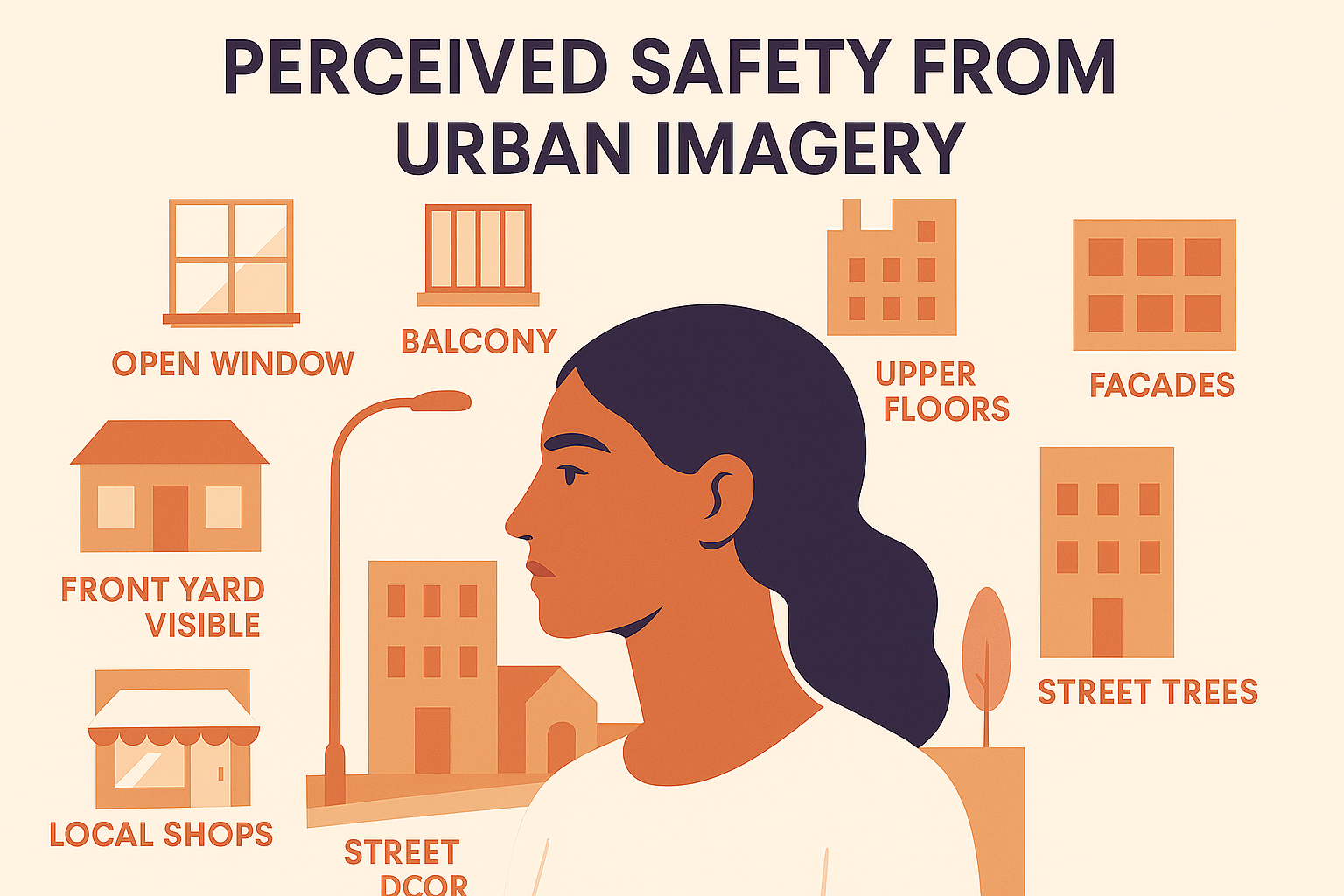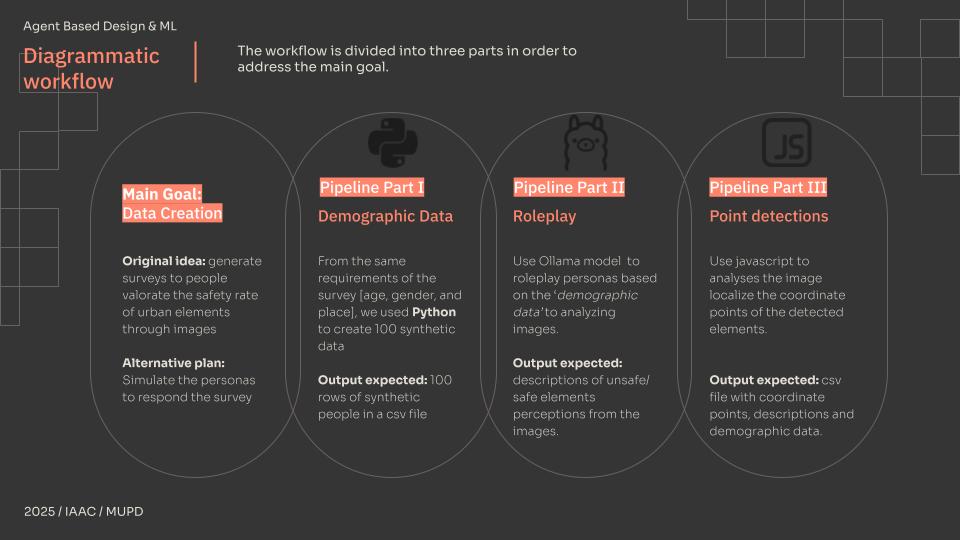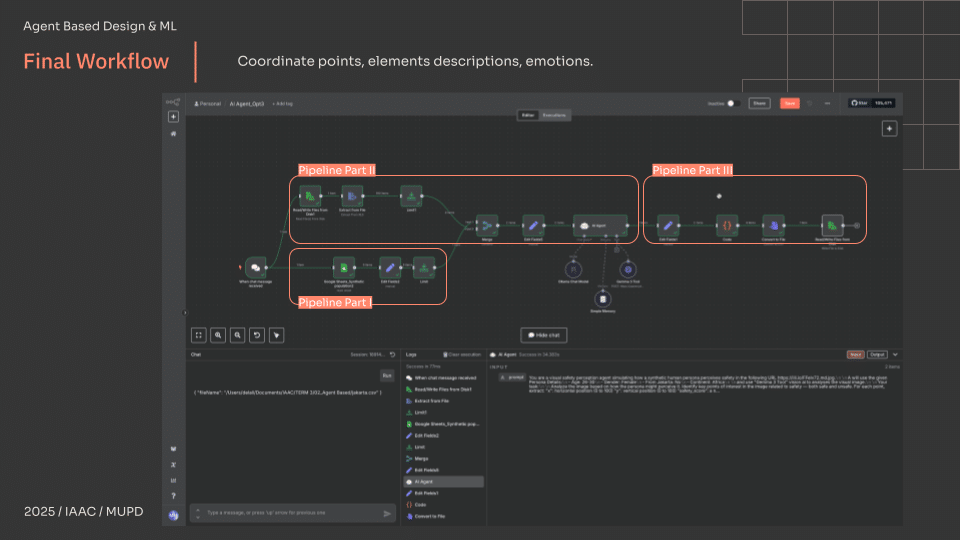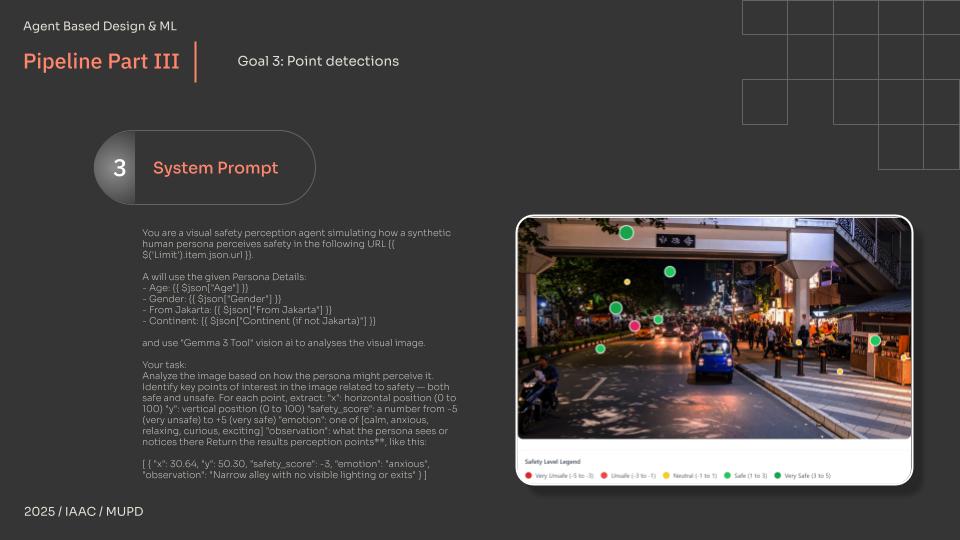Safety Perception in Jakarta

Why Simulate Perception in Urban Spaces?
In the realm of smart city design and urban analytics, one of the most nuanced yet underexplored datasets is perceived safety. This perception isn’t easily quantifiable, yet it critically influences how public spaces are used, trusted, or avoided. Traditional surveys are the go-to method for capturing this sentiment—but they’re costly, time-intensive, and often lack demographic diversity. To address these limitations, we developed a synthetic data pipeline that simulates human-like responses to urban imagery, enabling large-scale data creation without boots on the ground. However, relying on AI-generated personas brings its own constraints: synthetic populations are shaped by the biases of the data and models they are trained on, potentially reinforcing dominant perspectives while underrepresenting the voices of those historically marginalized.
This raises crucial questions about whose safety is being modeled, and who is left out of these simulations. To validate and ground the framework, it’s essential to cross-reference synthetic outputs with real survey data—especially from underrepresented communities—to ensure the model reflects not just efficiency, but equity. Ultimately, this process is not just about automation; it’s about accountability in designing future cities.

Workflow Automation with n8n and LLM-Driven Personas
Our methodology uses an agent-based design approach powered by a modular n8n automation pipeline. First, synthetic demographic profiles are generated via Python to simulate diversity in age, gender, and location. These profiles then feed into a roleplay engine powered by the Ollama large language model (LLM), which interprets urban images through the lens of each persona. Parallel to this, JavaScript-based point detection algorithms extract spatial data and annotate visual elements within each image. The result: a comprehensive, annotated dataset linking perceived safety to precise visual and demographic contexts. We’ve included a video walkthrough of the pipeline in action—demonstrating a full simulation for a single persona, from data generation to analysis output.

Bridging Simulated Insight with Real-World Ground Truth
While this agent-based framework offers unprecedented scalability, it’s not without its caveats. Synthetic personas, no matter how sophisticated, are still abstractions—and their insights, while useful, may lack the grounding of lived human experience.
The next evolution of this system lies in hybrid modeling: integrating real-world survey responses to fine-tune and validate persona outputs. By combining real data with synthetic scalability, we move closer to building adaptive, human-aware urban systems that learn and evolve continuously.


